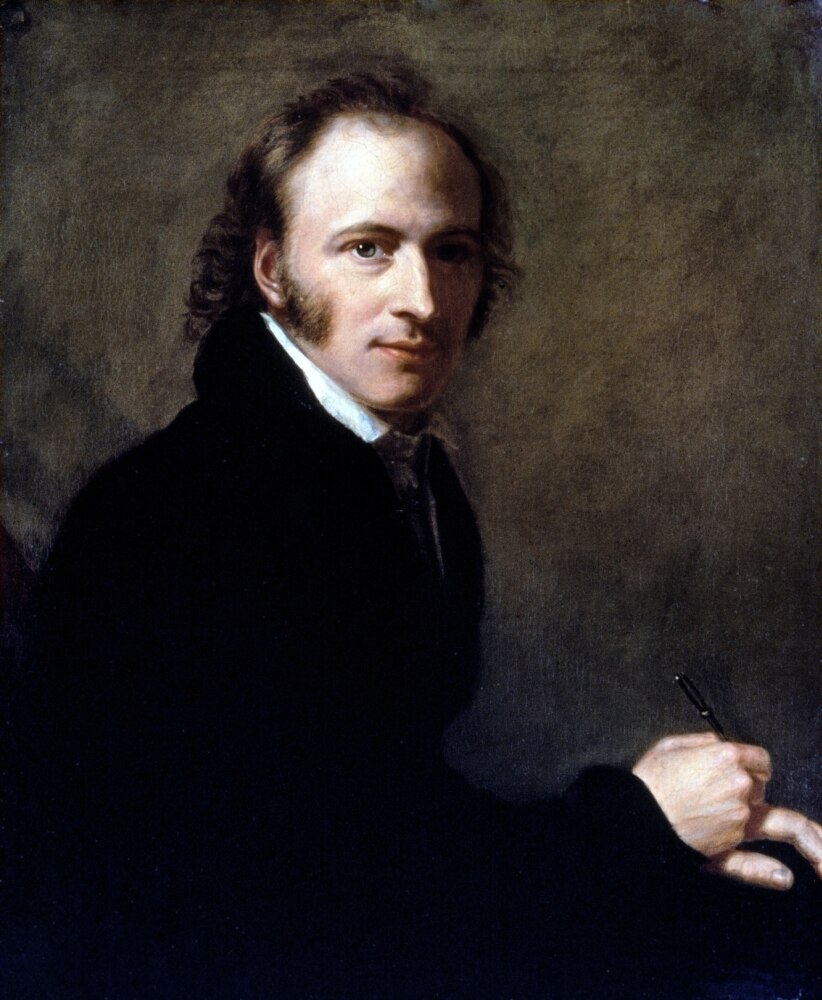More about Charles Bird King
Works by Charles Bird King

Contributor
Charles Bird King lived several generations ago, did a number of influential paintings, and never married.
The "never married" part of the story, in the echo chamber of the internet, can turn this opaque information into all kinds of juicy gossip involving money, astrology, anatomical abnormalities, bizarre phobias, occult vows and daytime telenovelas, but the only conclusion I've reached in my own accidental guessing is that he was "married" to his work.
King's father was named Zebulon, and was a Captain in the Revolutionary War. "Zebulon" was never as popular as "Oliver" and "Emma" among today's US baby names, but there were still a good number of military Zebulons in that era of history: a Confederate colonel, two soldiers, and a a politician or two. The name Zebulon originally refers to a tribe of the children of Israel, known for its business acumen and patronage of study. The painter Lesley B. Friedmann writes, "Zebulon’s role was to enter the marketplace and reveal the sparks of G‑dliness hidden within the materiality of the world."
On April 7th, 1788, 48 colonists settled Marietta, Ohio. President George Washington said, "I know many of the settlers personally, and there never were men better calculated to promote the welfare of such a community." The French General Lafayette said, as if writing a job recommendation, "They were the bravest of brave. Better men never lived." These were pretty attractive words to Captain Zebulon and his wife, Deborah Bird, who had made the controversially proto-feminist decision to give their son his mother's surname as a middle name. They set out with the three year-old Charlie Bird for the massive "Ohio country," which included territories of the Shawnee, Erie, Kickapoo, Delaware, Ottawa, Wyandot, and Miami tribes. Some of these territories are still occupied by the same nations today, but the official federal recognition sites and communities have generally been forcibly relocated to other areas by the government. Pennsylvania, Ohio, and West Virginia are not home to any federally recognized indigenous governments, although they were occupied by several nations at the time of Zebulon and Deborah's Western adventure.
That year, the indigenous warriors caught up with Zebulon, and Mrs. Bird King became a widow. Their son, eventually, became super-motivated to paint native people. In King's collection in the Smithsonian there are over 142 works, which is a huge proportion of the oeuvre of official indigenous political portraits from this period in general.
Sources
- Conley, Patrick T. The Makers of Modern Rhode Island. Charleston, SC: The History Press, 2012.
- Cosentino, Andrew J. The Paintings of Charles Bird King (1785-1862). Washington, D.C.: National Collection of Fine Arts, 1977.
- Friedmann, Lesley. "12 Tribes of Israel: Zebulun - The Businessman." Art for the Soul, Jul. 26, 2017, https://www.chabad.org/blogs/blog_cdo/aid/3598401/jewish/12-Tribes-of-I….
- Fundaburk, Emma Lila. Southeastern Indians Life Portraits: A Catalogue of Pictures 1564-1860. Tuscaloosa: University of Alabama Press, 2000.
- Magazine of Western History, Volume 9. Cambridge, MA: J.H. Kennedy, 1888.
- Proceedings of the Rhode Island Historical Society. Providence: Rhode Island Historical Society, 1875.
- Schneider, Erika. The Representation of the Struggling Artist in America, 1800–1865. New York: Rowman & Littlefield, 2015.
Featured Content
Here is what Wikipedia says about Charles Bird King
Charles Bird King (September 26, 1785 – March 18, 1862) was an American portrait artist, best known for his portrayals of significant Native American leaders and tribesmen. His style incorporated Dutch influences, which can be seen most prominently in his still-life and portrait paintings. Although King's artwork was appreciated by many, it has also been criticized for its inaccurate depictions of Native American culture.
Check out the full Wikipedia article about Charles Bird King












